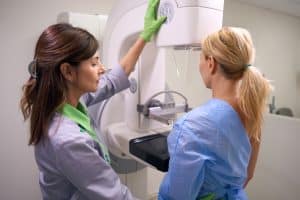Digital radiography is a modern medical screening method that has innovated the radiology domain. It is a non-invasive analytical device that lets medical professionals detain and inspect comprehensive images of the inner structures of the human body.
This imaging system has substituted usual film-based radiography in numerous medical amenities as it is loaded with immense advantages. Let’s discover how digital radiography functions and why it is preferred over conventional techniques.
Itsy-Bitsy Details of Digital Radiography
X-ray photons travel through digital radiography of the patient’s body; it interact with the inner tissues to diverse extents based on the density of the tissues. The digital sensor detects these X-rays, transforming the information into an electronic signal. Differing from usual radiography, photographic film isn’t needed to get an X-ray image. As a substitute, the digital sensor conveys the electronic signal to a computer; then, these signals are processed and transmitted to create a high-resolution image.
How Many Types of Radiography Are There?
There are two major types of digital radiography:
- Computed radiography (CR)
- Direct digital radiography (DDR)
Computed Radiography (CR)
With the help of a flexible screening plate, digital X-ray images are captured. In this process, a specific scale of sensitive material detains X-ray energy when exposed to the human body. A reader interprets the plate and transforms the energy captured into light. A tool transmits the light into digital data; that’s how an X-ray image is created.
Direct Digital Radiography (DDR)
Direct digital radiography utilizes solid and nonflexible-state digital sensors to capture X-ray images directly. These detectors usually consist of either silicon-based sensors or amorphous selenium sensors. When X-rays travel through the human body and hit the digital detector, it transforms the X-ray power into an electric charge. On the computer, this charge is transmitted to create a digital image.
What Are the Benefits of Digital Radiography?
Digital radiography comes with immense benefits as compared to usual film-based methods:
Faster Image in No Time:
Digital radiography supplied immediate image acquisition, allowing medical professionals to examine the images right away after exposure. This speedy turnaround time is helpful in urgent situations where fast identification is crucial.
Decreased Radiation Coverage:
On average, Digital radiography relies on less radiation to create high-quality images, unlike traditional radiography. It ensures the patient’s well-being. Furthermore, it curtails the possible hazards related to radiation exposure.
Improved Image Operation:
Digital radiographic images can be conveniently manipulated on the computer; this easy manipulation allows the doctors to navigate, such as they can to zoom in, regulate contrast, and improve explicit areas of interest. This potential helps in producing exact diagnoses.
Well-Organized Data Storage:
One of the best features of Digital radiography images is that they are stored electronically, eradicating the need for physical film storage. Digital formatting has made things super easier and simpler. Moreover, it is tremendously easy to share images sharing with another doctor.
Conclusion
Digital radiography has considerably modernized how medical screening is operated, providing quicker and more resourceful analytical capabilities. This system uses digital sensors and computer processing to carry out comprehensive and clear images while reducing radiation coverage. As machinery continues to progress, digital radiography is anticipated to progress further.




